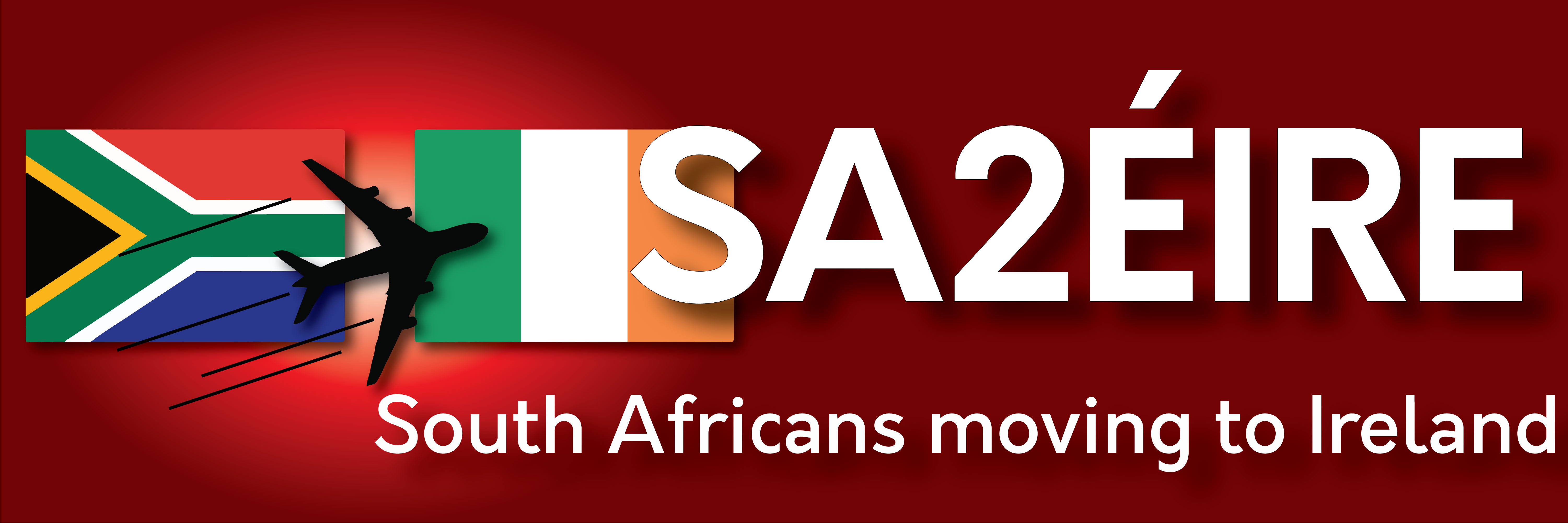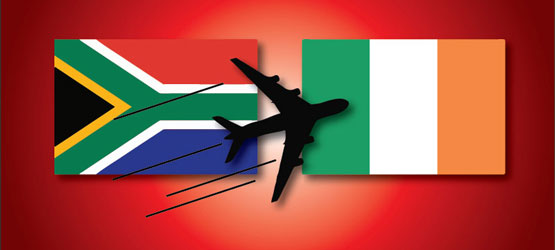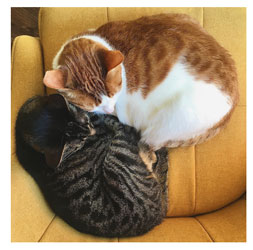When we decided to make the move to Ireland, there was no question that our furkids, Fred and Ginger, would be joining us. They are rescue cats - siblings from the same litter - and we couldn’t imagine making a new home in Ireland without them!
The first step we took was to chat to our vet (CitiVet Gardens) - they were really helpful and gave us some basic info on what would be needed in terms of inoculations etc, and they recommended we contact Animal Travel Services - a South African company specializing in (as their name suggests!), transporting animals.
Some basic info on Cat Specific Immigration
Since each person’s circumstances are different and this can affect the process and decisions taken, here is some basic background of our move to Ireland…
We were booked to fly to Dublin at the end of June 2017 (my husband is an Irish citizen and had secured a job starting at the beginning of July). Our cats were booked to fly about a month after us to give us time to find a place to live. We had an Airbnb booked for a week and planned to use that time to look for a rental property. In hindsight, this could have been cutting it quite fine as it’s not always easy to find a place to rent in Dublin, but am happy to report that we were really lucky on that front so it all worked out great (more on the accommodation story later…)
Before you get going on all your planning, I’d say there are two things that need to be carefully considered right at the beginning:
- Budgeting: it’s not cheap to emigrate with pets (although I’d argue totally worth it!) so this needs to be factored into your budgets carefully. The total cost for our two cats (including Animal Travel Services, vet bills and blood tests) was approximately R25k
- Timing: It can take about 6 months to prepare your pets for travel (with the necessary injections, blood tests and waiting periods) so get started on the process early
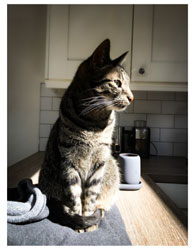
Requirements for pet travel:
Just to note, the info here is based on our experience when we brought our two cats to Ireland in 2017. I don’t think anything has changed significantly since, but it’s definitely worth checking before you start the process! Animal Travel Services are super helpful with this - they are experts in what is needed and can give you a clear list.
Microchip: Cats (all animals, I think) need to be microchipped with an ISO 11784/11785 compliant 15 digit pet microchip. I think this covers most microchips usually used, but you should be able to check with your vet to be sure (if it’s not the right kind of microchip, they won’t be able to scan them at customs in Ireland).
- Annual inoculations: All regular inoculations must be up to date
- Rabies vaccinations: A rabies inoculation must be done after they are microchipped and they must be up to date with their booster inoculations (note: we were not, which meant that we had to have the ‘primary vaccination’ followed by the booster - I think these had to be about a month apart).
- Titre test: After 30 days from the rabies booster vaccination, you need to have a blood test done. This is taken by the vet and sent to Onderstepoort and the results can take a couple of weeks to come back. If it’s all clear, your pet must then wait 3 months before entering Ireland. If the results were not in order, you may need to have another booster and then redo the blood test
- Vet certificate (EU): You need to get a final vet certificate prior to the cats leaving. Because we were not flying with our cats (or within 5 days of them), this certificate had to be obtained within the 48hrs before they traveled. Animal Travel Services sent me the required form to be printed and taken to the vet to complete.
- State vet certification: The vet certificate has to then be verified and certified by the state vet before your cats are cleared for travel (this step was handled by Animal Travel Services once they had picked the cats up for travel)
Documents that need to be sent along with your cats:
- Vet books / records
- Microchip certificate
- Rabies blood test report
- One page health certificate (official EU form to be completed by your vet)
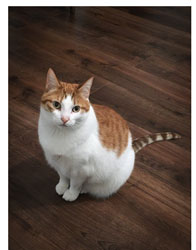
Tips for preparing your pet for travel
The whole experience can be quite traumatic for pets - the loud noises, the movement, the unusual environment - so making sure they are as comfortable as possible is important. We had intended for our two cats (who are siblings) to travel in one container, but when they were collected, it turned out that their combined weight was too much for the container of its size (our boy cat is a chubby guy!) so unfortunately they had to travel in individual cases. We cut up their favourite sleeping blanket and put a portion in each container to give them something familiar and comforting - it’s hard to know how much this helped, but it was worth a go! We were also told to leave a pouch of their dry food for each cat so they could be fed in transit (they would have a stop in Switzerland where they could be fed and given water).
Preparing for your pet’s arrival
I’m sure a lot of this goes without saying, but just in case…
- Find a local vet and register your pets so they’re all set up for when they arrive
- Get all the necessary food, bowls, scratching posts, beds, blankets etc so their arrival is as comfy and smooth as possible
- Buy a cat carrier and take this along to the airport when you collect them (the boxes they travel in are cumbersome and difficult to carry so it’s way easier to leave those at the airport)
Our cats arrived in perfect health, but I think the whole experience was quite stressful for them - I don’t think they’d slept or drunk anything the entire trip because when we got them home, they drank more water than I’ve ever seen them drink and then they just slept for nearly 3 days straight - I know this sounds normal for cats, but it was very different to their usual cat-like rest. They soon adjusted though and have been very happy here ever since - in fact, I think they much prefer the weather (instead of the crazy hot SA summers!).
Airport pick up and transport
Collection is at the cargo section of the airport (it’s about a 10 minute walk from Terminal 2). Follow signs to Cargo, and if using Animal Travel Services, you’re looking for Cargo Unit 5 - WFS.
You’ll need to head to the WFS building, collect their papers and then take these to the Aer Lingus Cargo building to have the docs stamped and to pay customs. Then you can return to the WFS building to collect your fur kids. The total cost for ours was €38 (covered handling, customs etc).
Everyone was super helpful, and all went really smoothly. The only obstacle we faced was that we don’t own a car so we had taken the bus to the airport and then planned to take a taxi back. This proved more difficult than anticipated as many taxis didn’t want to take pets even though they were in a carrier. We did eventually find one (and have since had more luck with taxis too) but I might recommend renting a car, or using GoCar which would make the process much easier! Plus you can then drive straight to the cargo section rather than carrying the heavy furballs back to the terminals to catch a taxi.
Finding pet-friendly accommodation
As I’m sure most people are aware, finding accommodation in Dublin can be difficult at the best of times, and finding pet-friendly accommodation is a bit like looking for a pot of gold at the end of a rainbow.
We got super lucky with how quickly we found a place to live, but for anyone looking for pet-friendly accommodation, here are my tips…
Don’t limit your online search to pet-friendly! Most landlords don’t list their properties as pet friendly but some are still willing to allow pets if you talk to them about it. This is how we managed to get it right - we went to view a property, explained to the owner that we have two (well behaved!) cats and she was happy to allow it.
- Call or meet landlords in person. Before I arrived, I had tried contacting a few estate agents without much luck - an Irish friend of mine said I should just try calling people when I am in the country as ‘Irish people like that chat’ - and how right he was! Landlords are way more likely to offer you a place if they can talk to you or meet you and get a sense of who you are and that you will be responsible tenants!
- Make sure you discuss the rental deposit (some landlords will charge an extra deposit for having pets) so that there are no disagreements at the end of your lease about damage / wear and tear caused by pets.
- Make a cat resume to add to your rental application documents. We hadn’t gotten around to doing this yet so didn’t end up needing it, but it can be a nice touch and gives you a chance to make a case for why they’d be good pet tenants
Animal Travel Services - Highly Recommended
I cannot recommend Animal Travel Services highly enough. We dealt with Dominyc who was always helpful, responsive and efficient. She was also friendly and kind, and completely put our minds at ease that our cats were in good hands.
They really made our lives so much easier! They collected all the documents needed from our vet, collected the cats on schedule from our family member who was looking after them before their trip, and made sure they were well looked after along the way. Definitely 5-stars!
Important links:
 #MapMyMove- Our coaching Services - Confused or lost and need some direction, book a session with us to help untangle the confusion and work out your route of immigration
#MapMyMove- Our coaching Services - Confused or lost and need some direction, book a session with us to help untangle the confusion and work out your route of immigration
 Animals: The care of and rules within Ireland
Animals: The care of and rules within Ireland
 Blogs on Pets - a whole load of blogs by people who have brought various pets in various ways to Ireland
Blogs on Pets - a whole load of blogs by people who have brought various pets in various ways to Ireland
 Plants: Bringing plants to Ireland
Plants: Bringing plants to Ireland
If you have a story to share please email us a blog at This email address is being protected from spambots. You need JavaScript enabled to view it.
